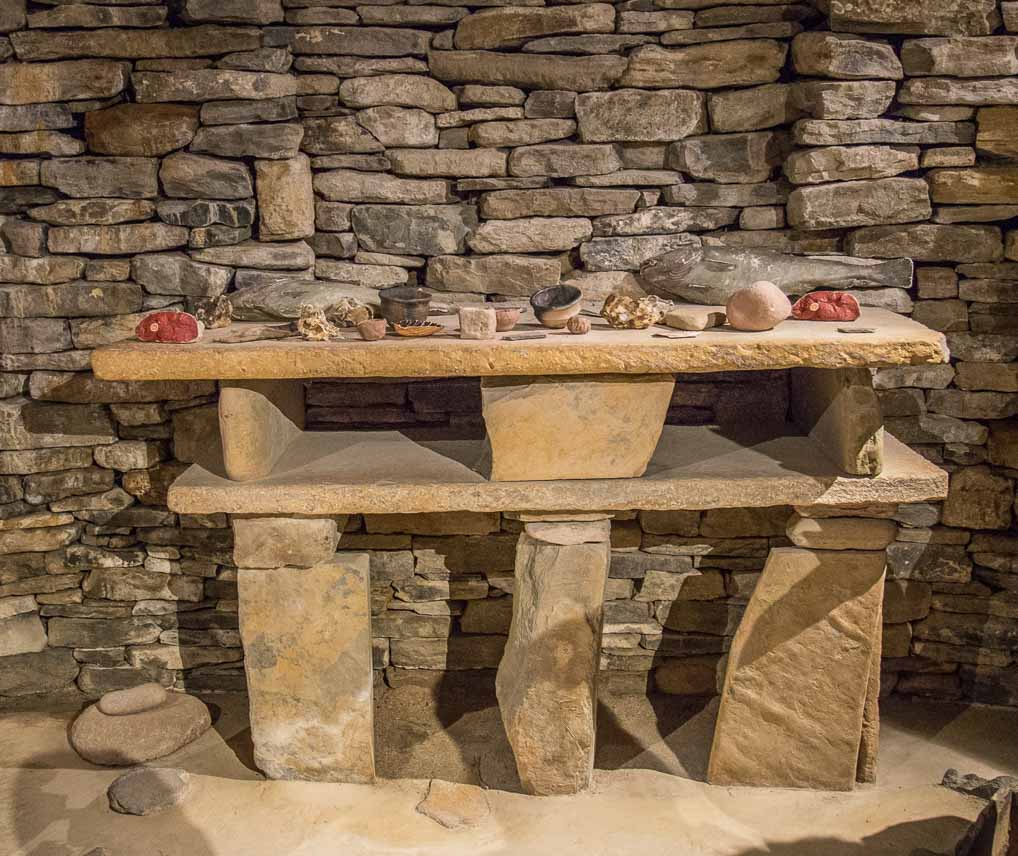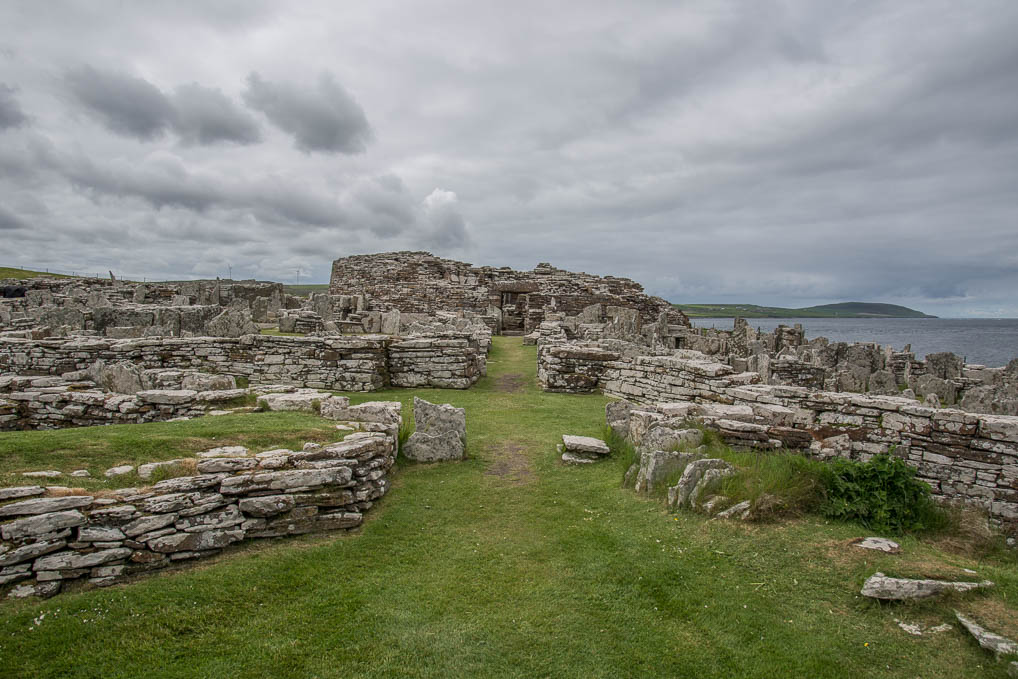As we watched the BBC Weather forecast last night it became apparent that our ferry trip back to the mainland on Thursday would either be cancelled or would result in us losing our breakfast over the side! The forecast for the time of our sailing was for 50 mph winds. We decided that since we would not get much sightseeing completed on Wednesday due to forecast heavy rain, we would try to rebook our crossing for Wednesday.
First thing this morning I called Pentland Ferries and much to my surprise our crossing was re-arranged with no problem. So today was going to be our last day on Orkney.
We decided that we had tried to fit in too much yesterday and in any event we had managed to see most of the main sites, so we limited today’s visits to two historical sites and an RSPB reserve.
Our first visit was to Skara Brae, the most famous of Orkney’s neolithic sites. Following an extreme storm in 1850, which killed 200 people, villagers found that a well known mound had been stripped and what was left was the outline of an abandoned village. Excavations have shown that it is a complete village dating from approximately 3,200 BC!

One of the original Skara Brae houses. The stone dresser if on the right, stone bed left of centre and hearth in the centre of the house
Visitors cannot now walk in the excavated houses, due to erosion, but it is clear to see the neolithic houses from the walkways which surround the site. In addition a complete reconstruction of the largest of the houses has been made so that visitors can get the feel of being inside one of these stone age houses.

The stone dresser in the replica Skara Brae house
The houses are constructed using dry stone walling techniques and are complete with stone furniture such as dressers and beds and each dwelling has a central hearth. The village also had a basic drainage system. People lived in the houses for about 700 years before, for some unknown reason, the village was abandoned.
The small associated exhibition centre shows artefacts excavated from the site, including stone, bone and ivory tools together with pottery.
Having explored Skara Brae we drove around the north coast of the “mainland” to the later Broch of Gurness. We have already visited two “brochs” on our trip around Scotland and they all date from about 500 BC. It is not known whether or not the builders of the brochs are the descendants of the neolithic inhabitants of Orkney.

Broch of Gurness
Gurness is the best preserved of the Scottish broch settlements, because in addition to the central broch, which was probably a sort of fortified farmhouse, there are numerous associated dwellings from the same period. The central hearth and stone furniture have a passing resemblance to the dwellings at Skara Brae.

Inside the Broch of Gurness
When I arrived the ticket office was closed and I followed in a large Dutch coach party. The office eventually re-opened and I showed my multi-site ticket, but outrageously the leader of the Dutch party refused to pay for her 20 or so group members on the basis that “the office was closed when we arrived”!!
Finally we headed to nearby Birsay Moor RSPB reserve where I had been told that there was a good chance of seeing Red Throated Divers, supposedly the commonest of the three divers in Scotland but the only one I haven’t managed to see. I was to be disappointed. The RSPB had built a very upmarket hide, but all that was visible on the loch were Greylags and Mallards, both of which I can see in profusion less than a quarter of a mile from the home!! Never mind the birding in the north of Scotland has been superb and as we returned to our campsite I was able to watch a male Hen Harrier hunting over the nearby land for several minutes.
Tomorrow we catch a ferry back to the mainland at 11.30 am and hope to find a wildcamping spot before heading to the Black Isle on Thursday.
